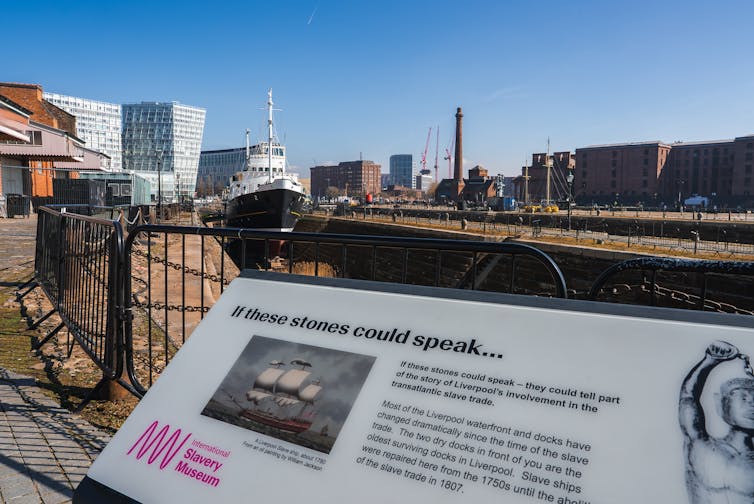When public money is tight, how do governments put a price on culture?
- Written by Steve Nolan, Senior Lecturer in Economics, Liverpool John Moores University

It’s no secret that public finances[1] are tight in the UK. This spells trouble for many sectors, not least culture. After all, this is an area that often relies on public funding – with many projects facing an uncertain future[2]. But in an era of economic bad news, can it be justifiable to pump money into what some see as “frivolous” projects[3]?
For some politicians, investment in cultural infrastructure is an investment in place and in people. This is the hope behind a £270 million fund[4] that aims to boost the resilience of cultural institutions following an era of restricted public spending. There are limitations, and the culture-led approach – as with regeneration projects in general – remains only partially successful and deeply uneven[5].
From the role of large-scale cultural events[6] like the European Capital of Culture[7] to the so-called “Bilbao effect”[8] (where a new cultural site is thought to spark revitalisation and economic growth), the same questions arise. Who is it for? What type of value is created – and is it shared in equitably?
But the question is also about how we might better understand and measure the value of a cultural site, collection or (re)development.
But what about a history lover who either lacks the desire or the ability to visit the collection? Or someone whose memories or heritage intertwines with the history? Despite having no direct contact, they might still benefit from the sites’ continuing existence: the fact, for example, that a place exists where other citizens can visit, challenge and debate.
For some, there is value simply in knowing that there are spaces for this kind of engagement. In this way, public use by others can generate indirect benefits. These benefits cannot be captured by traditional metrics like footfall. But they constitute value to that individual and, in turn, the communities in which they live.
The inclusion of non-use value within the Treasury’s evaluation[14] recommendations recognises this complex public relationship with cultural goods. Correctly capturing these benefits is crucial. If not, funders may misconstrue a project’s total economic value when they make their decisions. Some that could generate significant public value might be overlooked.
However, non-use value can be slippery both to define and measure. Understanding how engagement with publicly funded cultural goods varies across communities and regions is crucial. This current gap in our knowledge means that non-use value is not always fully considered in the design or evaluation of cultural programmes.
Our ongoing project[15], undertaken along with post-doctoral research fellow Laura Taggart[16], attempts to improve this understanding in the context of Liverpool’s Waterfront Development Project.
This process raises vital questions. What are the benefits and potential harms of the site? How do relationships with it change over time and across economic and ethnic groups? And how does the public’s historic relationship with the dockside change the nature of the non-use value generated?
Clearly, the answers to these questions cannot easily be calculated from the results of a cost-benefit analysis. Like most economic tools it is a model – a simplification of reality[17] that aims to help policymakers make informed decisions. By engaging locally and regionally, it is easier to understand what drives non-use value – and capture it in a way that is relevant across other projects.
At heart, our project aims to capture the voices that are often excluded or overlooked[18] in decisions about cultural funding. By developing a better understanding of the range of non-use value from these spaces, we hope to support more rounded approaches to cultural policy.
This means improving evaluation tools and funding frameworks. They must better reflect how people relate to cultural goods and how this differs across communities and regions. This will help in the quest for a richer concept of “value for money”[19] — one that supports political choices that recognise the long-term civic, emotional and historical returns of cultural infrastructure.
Ultimately, in an era of tight budgets this allows for better and more targeted decision-making that recognises the often complex value and benefit flows that culture generates. But there is work to be done to help the public articulate the nature of benefits and costs. These are as vital and complex as the cultural goods that generate them.
References
- ^ public finances (www.theguardian.com)
- ^ uncertain future (www.bbc.co.uk)
- ^ “frivolous” projects (www.spectator.co.uk)
- ^ a £270 million fund (www.gov.uk)
- ^ partially successful and deeply uneven (www.thebritishacademy.ac.uk)
- ^ cultural events (www.tandfonline.com)
- ^ European Capital of Culture (culture.ec.europa.eu)
- ^ “Bilbao effect” (onlinelibrary.wiley.com)
- ^ Sign up to our daily newsletter (theconversation.com)
- ^ not without criticism (www.aeaweb.org)
- ^ “non-use value” (historicengland.org.uk)
- ^ Waterfront Transformation Project (www.liverpoolmuseums.org.uk)
- ^ NorthSky Films/Shutterstock (www.shutterstock.com)
- ^ Treasury’s evaluation (www.gov.uk)
- ^ Our ongoing project (cherpp.mmu.ac.uk)
- ^ Laura Taggart (cherpp.mmu.ac.uk)
- ^ a simplification of reality (drodrik.scholar.harvard.edu)
- ^ often excluded or overlooked (papers.ssrn.com)
- ^ “value for money” (www.gov.uk)







